Centuries-old trees, colourful flowers, ancient ruins, crystal clear water feature, the Garden of Ninfa is a true work of art to be experienced with the five senses. Let us immediately immerse ourselves in this Paradise!
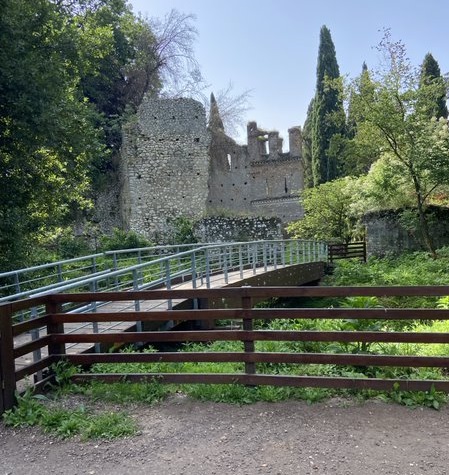
Entrance to the Garden of Ninfa
We enter the garden from where a bridge once stood. The presence of water has undoubtedly made the citadel of Ninfa rich and powerful in the Middle Ages.
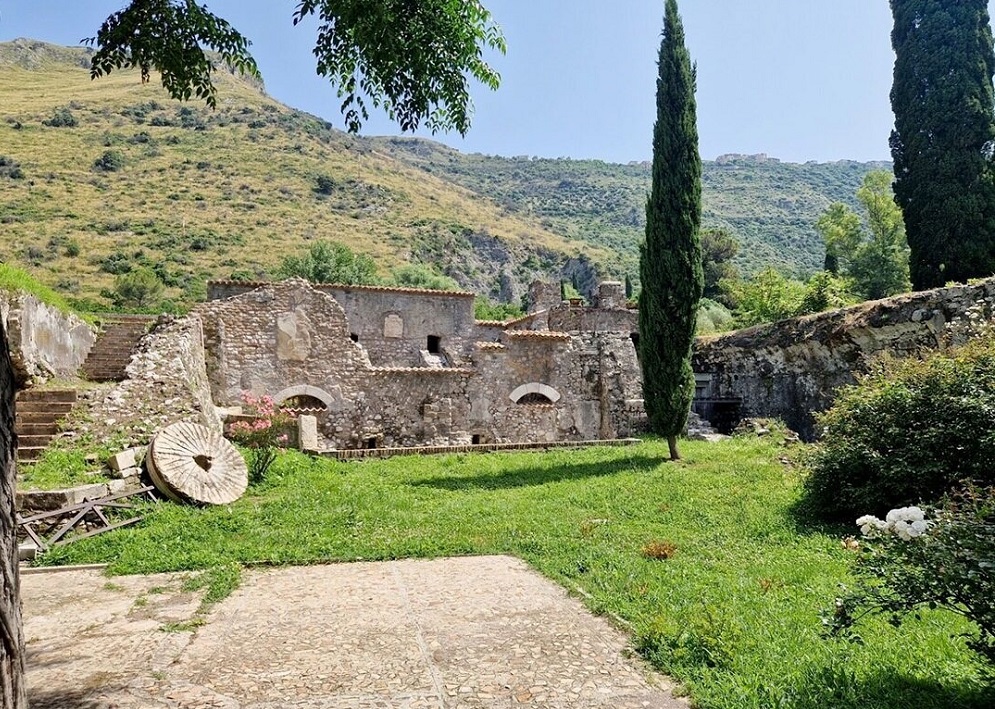
The old mill of Ninfa
Ninfa was a ferment of industrial activities, such as mills, ironworks, tanneries, and others. Thanks to the abundance of water, it had been flourishing for many years, even though undergoing some tragic events. Many times Ninfa was led to glory by powerful families but as many times it was neglected and left buried by a thick vegetation.

Roffredo Caetani
In 1920, Gelasio Caetani, with his English mother Ada Wilbraham, saved the ruins of Ninfa from the swamp and gave them a new life. His brother Roffredo continued the works with his wife Marguerite and and his daughter Lelia.
Today Ninfa, thanks to the loving intervention of the Caetani family, is a romantic English garden, the most beautiful in the world, according to the New York Times.
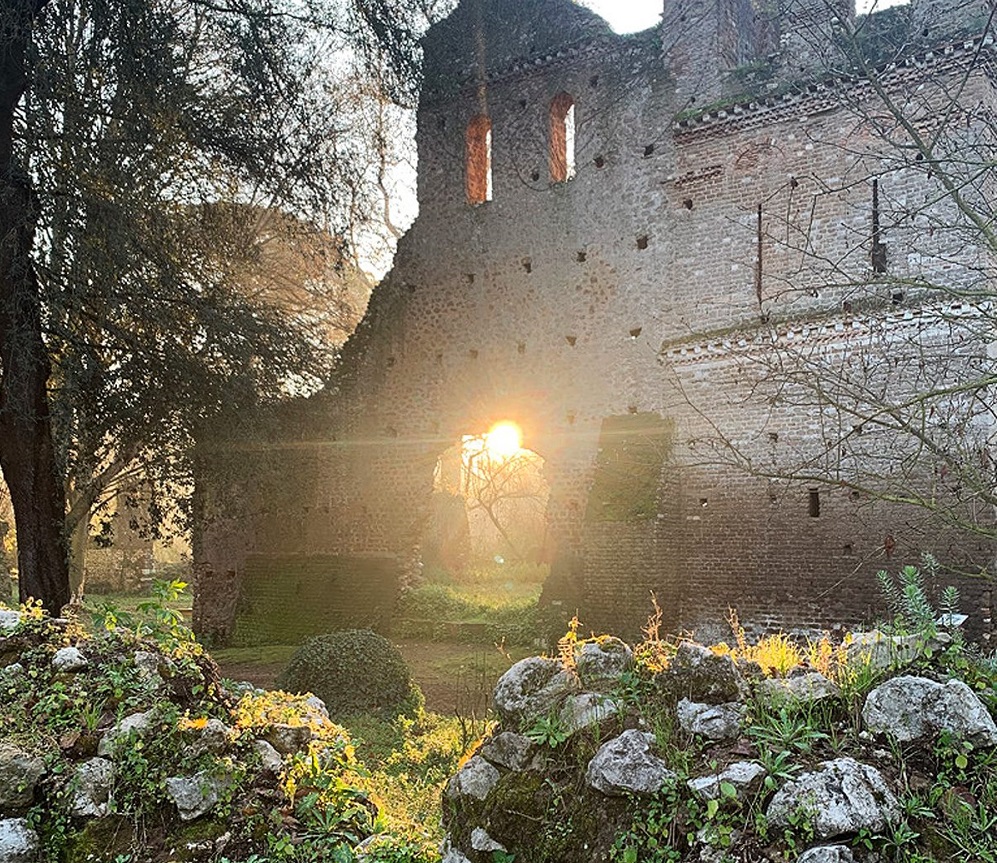
The façade of the Church of Santa Maria Maggiore by frcaetani.it – V. De Rubeis, S. Manfredini, P.G. Sottoriva
The first attraction along the route is the Church of Santa Maria Maggiore. From its entrance, we can see the central nave and the apse, which was decorated with several frescoes, today preserved in the nearby Sermoneta Castle.
In this very important site, Alexander III was made Pope in 1159.
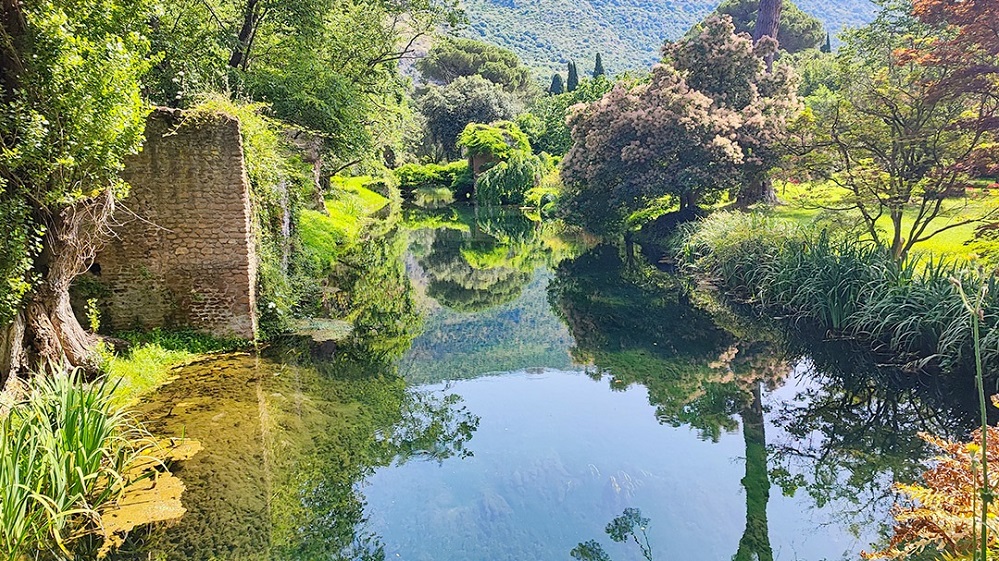
The Tree of the Mist reflected in the water
Let us stop to admire the tree reflected in the river on the right of the church, called “the Tree of the Mist” because of its inflorescences similar to soft pink swabs.
Although everything seems so spontaneous and natural, nothing here is left to chance. Every day a team of gardeners takes care of every single corner of the Park, cleaning, pruning, cutting and collecting foliage.
The route continues throughout impressive, centuries-old trees, plane trees with bright, intense green colours, pomegranates and ornamental apple trees. In spring, the flowering is particularly rich and spectacular.
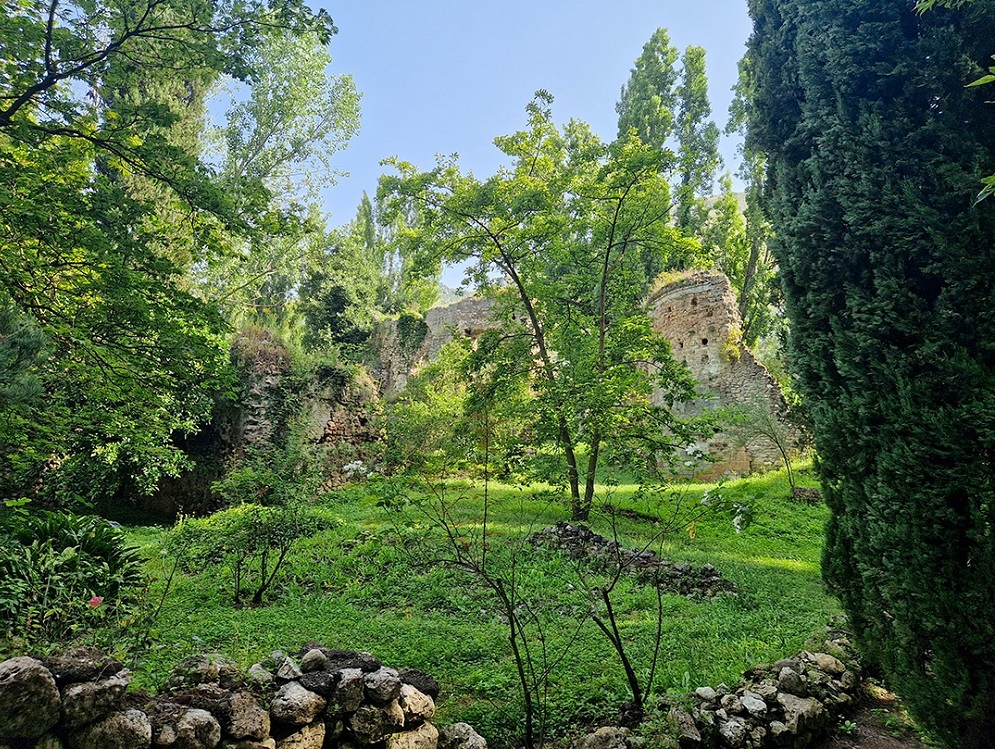
Ruins of the Church of San Giovanni
Not to be missed the remains of the Church of San Giovanni with its sacristy hosting the reconstruction of the citadel of Ninfa as it was in the Middle Ages.
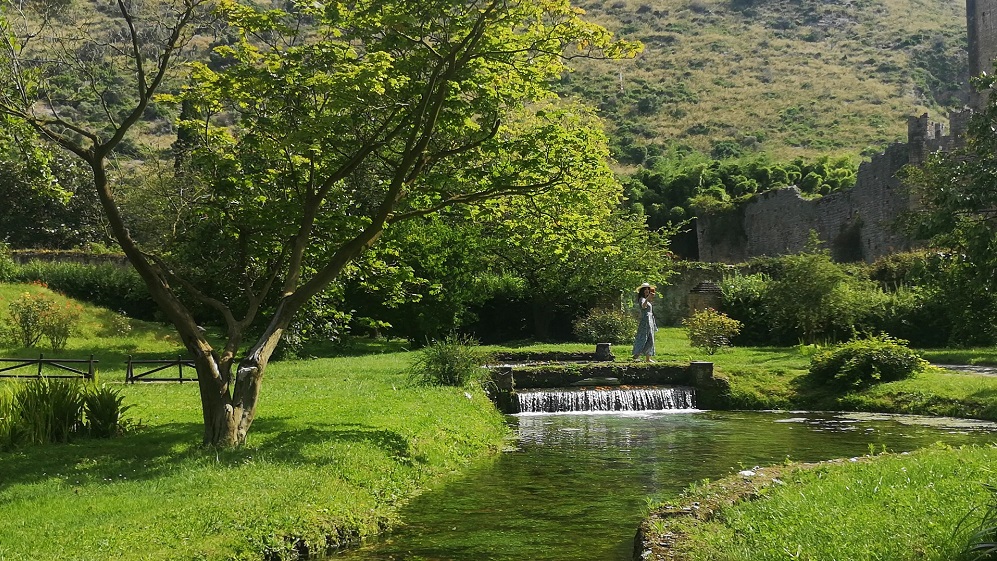
After the sequence of clear waterfalls, which create a harmonious sound, we turn the corner towards the Tower and the water features.
Roffredo Caetani, a refined musician, decided to arrange the waterfalls into different musical tunes, vibrating throughout the garden, an amazing concert performed by nature.
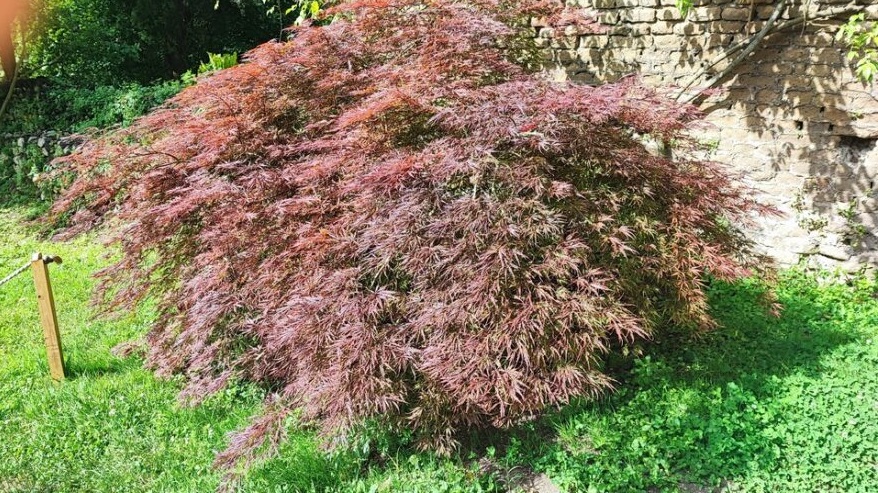
Japanese Maple trees
We arrive in the area of Japanese maples, Canadian maples and Himalayan magnolias.
A journey around the world within just fifty metres, also created by the young brothers Gelasio and Roffredo. Returning from their travels, they brought back the most unusual plants for their garden, which we can still admire today, thanks to the extraordinary microclimate due to the nearby sea, the Lepini Mountains and the abundant water.
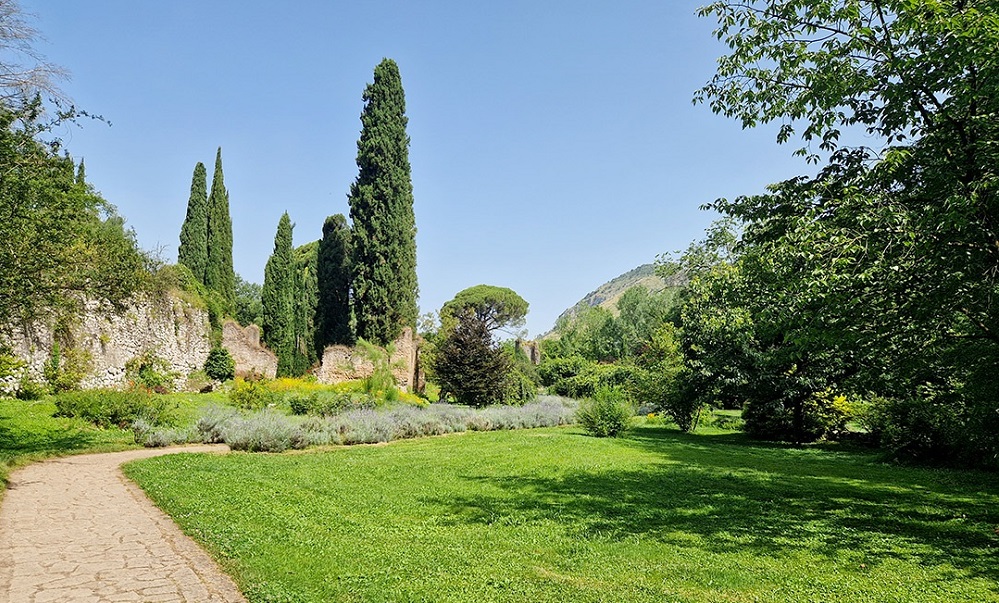
Viale delle Lavanda
We walk through the city along the main road, via Pontis, bordered by tall cypresses. We pass by the remains of a private residence and reach Viale della Lavanda. Here colours are sensational and the scent will persist even at the end of the flowering.
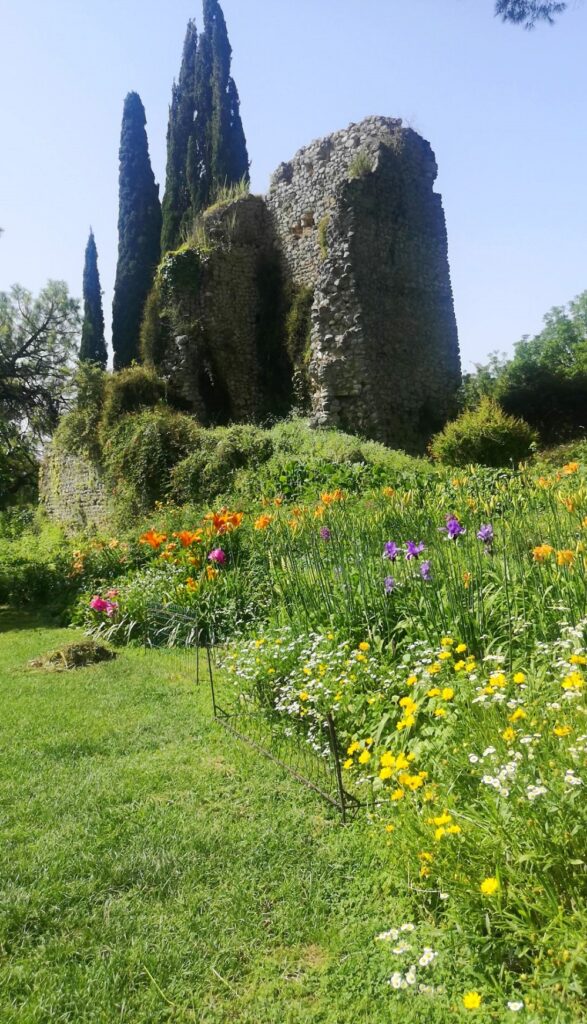
The colourful flowers collar
After the Church of San Biagio, we arrive in the area of the famous collar designed by Lelia Caetani, where coloured flowers form an enchanting vegetal embroidery.
A few steps from here, right in front of the collar, there is a bench where the painter-gardener, as Lelia used to define herself, loved to paint inspired by the different colours of the blooms all year round. Here we find more than 500 plants, which alternate in flowering and, with their scent, attract a great variety of insects.
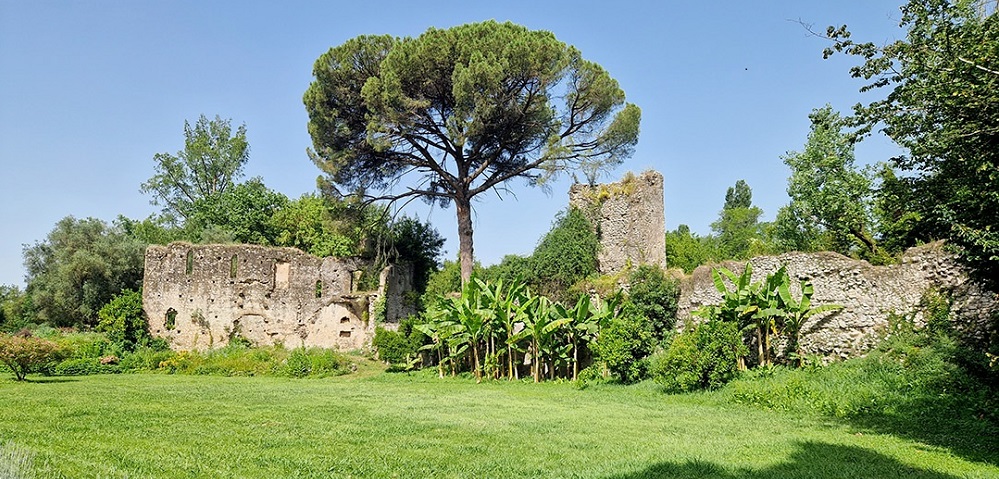
Banana trees in the sunniest area of the garden
Banana trees and other tropical plants surprisingly grow in the warmest and sunniest area of the park. In Ninfa, by travelling a short distance, you can find plants from very distant latitudes.
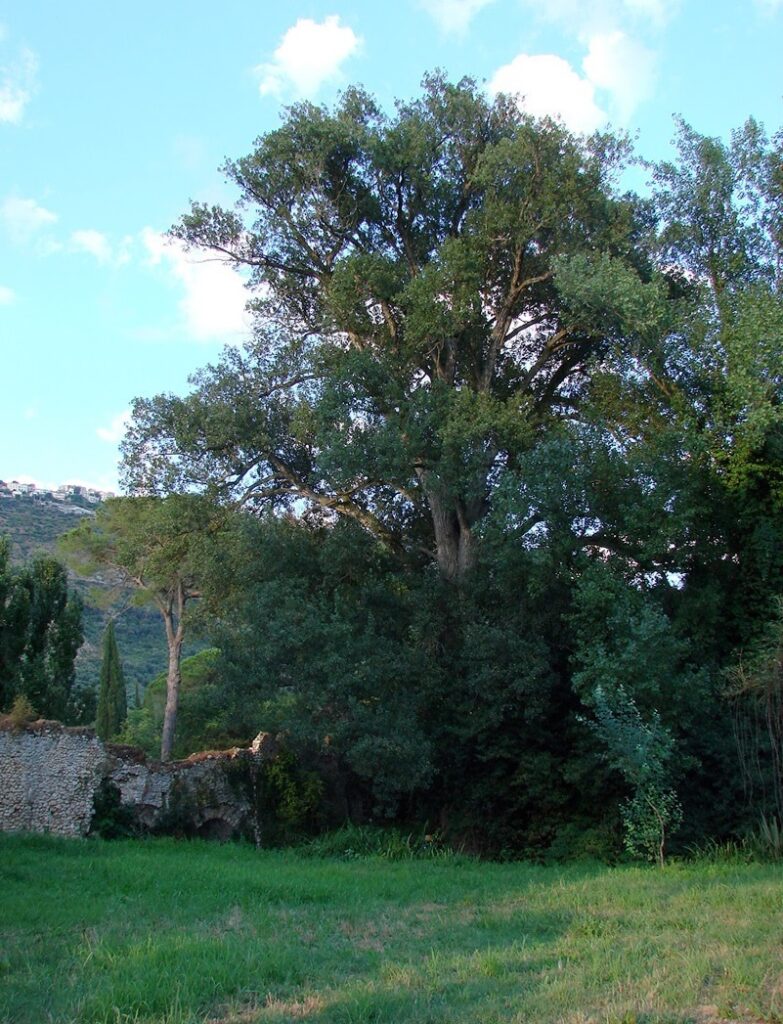
The Monumental Black Poplar, the guardian of Ninfa
A jewel not to be missed is the Monumental Black Poplar, the largest in Italy. It is between 150 and 180 years old, an unusual age for a Poplar, which usually does not live for more than one hundred years. The tree is called “the guardian of the garden” because, with its trunk over ten metres at the base, it towers over the entire park.
The history of Ninfa has always fascinated many illustrious guests in search of spiritual intimacy. We can imagine them wandering along the paths, cooling off in the waters of the river or in the shade of a tree. Tomasi di Lampedusa, Ungaretti, Calvino, Gadda and Truman Capote have drawn inspiration here. Some pages of the Bassani’s masterpiece “Il Giadino dei Finzi Contini” were written right here, near the Dogana di Ninfa, next to the river.
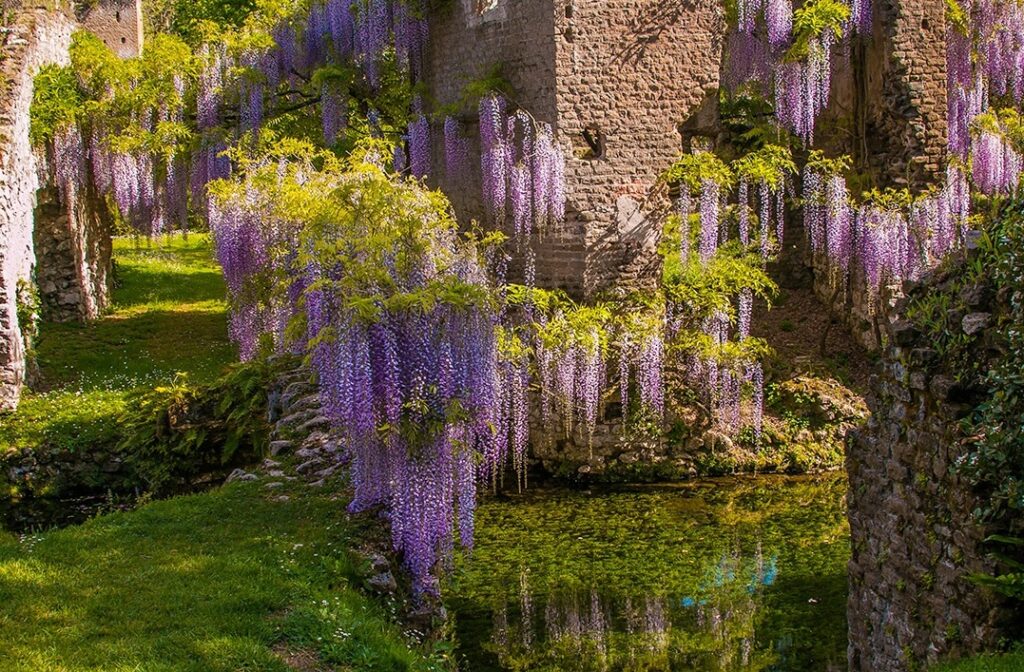
A triumph of Wisteria on the waters of Ninfa
The hazelnut grove, populated by small squirrels, hedgehogs, porcupines, martens and foxes, leads us to the Roman Bridge, surrounded in spring by clusters of wisteria up to one metre long.
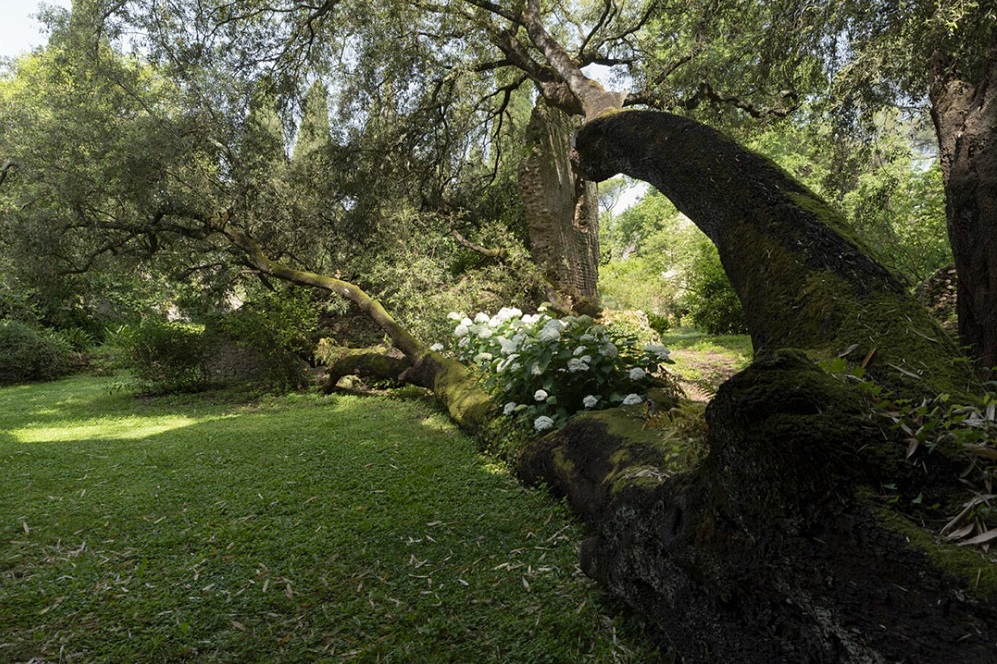
The lying holm oak trunk
In the Oasis, we also can admire a beautiful holm oak trunk unusually lying alive on the ground. After the fall, caused by a violent storm, its roots continued to grow thanks to the exceptional fertility of the soil. Incredible!

The splendid Bamboo Area
We arrive at the giant bamboo area, where we recognize the younger plants by their bright green colour. Between April and May they can grow at a rate of fifteen centimetres per day.
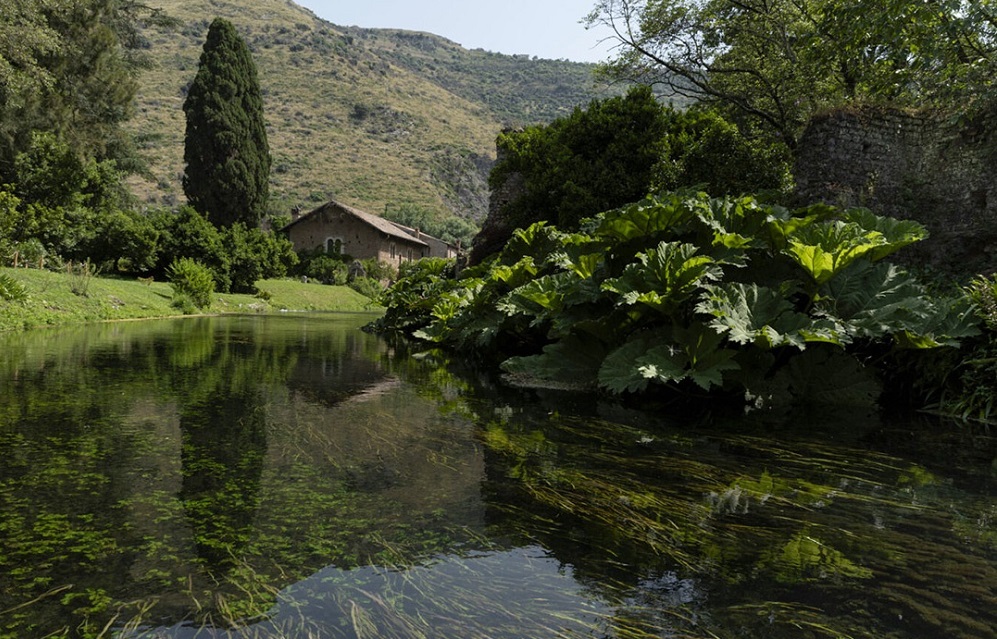
Gunnera Manicata, a giant leave plant native to Brazil
On the edge of the river, a plant with enormous and robust leaves catches our attention. It is the large Gunnera Manicata from Brazil, where it was used to manufacture umbrellas, rafts or pans.
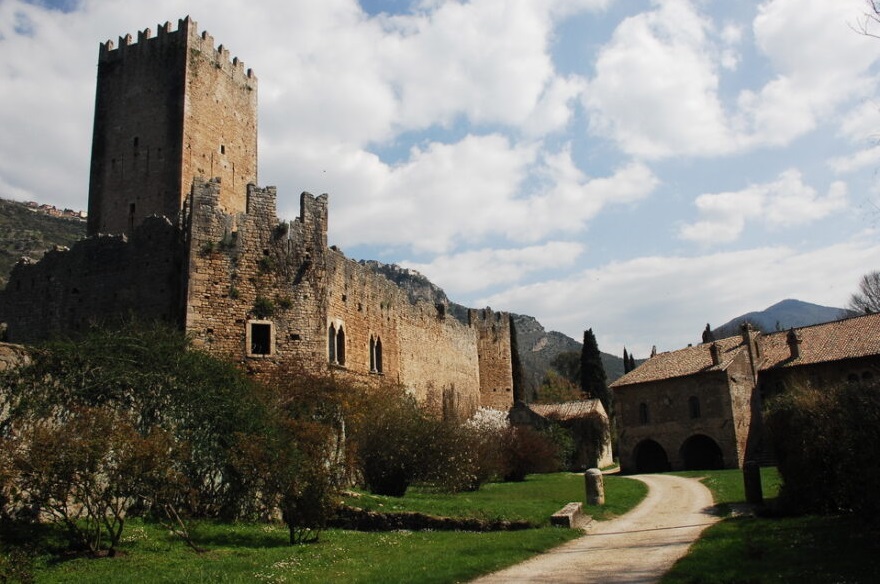
The Tower with the elegant dovetail battlements
We have reached the last stop, the Town Hall Square and the Tower with the Norma Cliff behind it. Let us stop and admire the peculiar Gothic- style mullioned windows and the elegant dovetail battlements, also running along the city walls.
Ninfa is therefore a priceless handed down treasure to be left to posterity, for Princess Lelia, having no children, entrusted, before her death, the care of all her possessions to the Fondazione Caetani.
At the end of our visit, we are left with a deep feeling of gratitude towards the extravagant and visionary Caetani Family, who created for us the heart-breaking beauty of Ninfa, a small paradise for the soul, illuminating the best part of us.
Visitors to the Garden of Ninfa are admitted on reservation from March to November, according to an annual calendar.

The Oasis of Ninfa
An Oasis of about 1800 hectares was established around the nucleus of Ninfa in 1976, to protect the local fauna, also including the Pantanello Park, rich in ponds and marshy environments alternating with wooded areas and clearings, a pearl not to be missed.
